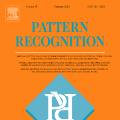Human movement studies and analyses have been fundamental in many scientific domains, ranging from neuroscience to education, pattern recognition to robotics, health care to sports, and beyond. Previous speech motor models were proposed to understand how speech movement is produced and how the resulting speech varies when some parameters are changed. However, the inverse approach, in which the muscular response parameters and the subject's age are derived from real continuous speech, is not possible with such models. Instead, in the handwriting field, the kinematic theory of rapid human movements and its associated Sigma-lognormal model have been applied successfully to obtain the muscular response parameters. This work presents a speech kinematics based model that can be used to study, analyze, and reconstruct complex speech kinematics in a simplified manner. A method based on the kinematic theory of rapid human movements and its associated Sigma lognormal model are applied to describe and to parameterize the asymptotic impulse response of the neuromuscular networks involved in speech as a response to a neuromotor command. The method used to carry out transformations from formants to a movement observation is also presented. Experiments carried out with the (English) VTR TIMIT database and the (German) Saarbrucken Voice Database, including people of different ages, with and without laryngeal pathologies, corroborate the link between the extracted parameters and aging, on the one hand, and the proportion between the first and second formants required in applying the kinematic theory of rapid human movements, on the other. The results should drive innovative developments in the modeling and understanding of speech kinematics.
翻译:暂无翻译




